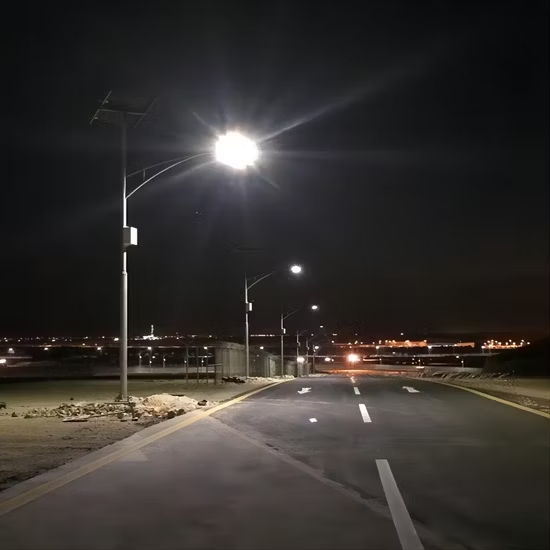As communities and cities strive for energy efficiency and sustainability, solar-powered street lights have become a vital part of modern infrastructure planning. These systems harness the sun’s energy to provide consistent, reliable illumination for streets, parks, and public spaces while reducing reliance on conventional electricity grids. With advanced battery storage and efficient LED technology, solar-powered lighting offers a practical solution for municipalities, commercial properties, and residential areas seeking long-term energy independence.
Beyond the environmental benefits, Solar Power Street Light improves safety and convenience in urban and suburban areas. By storing energy during the day and automatically illuminating at night, these systems maintain consistent performance even during power outages. This makes solar-powered lighting a resilient and sustainable choice, capable of supporting emergency response efforts, reducing energy costs, and promoting greener communities.
Key Advantages of Solar Street Lights
- Achieving Energy Independence- Solar street lights operate off-grid, generating electricity from sunlight and storing it for nighttime use. This independence from traditional energy sources allows communities to reduce energy expenses and mitigate the risks associated with power outages, ensuring reliable lighting for streets, pathways, and public areas.
- Sustainable and Eco-Friendly- Solar-powered lighting reduces greenhouse gas emissions and environmental impact. By utilizing renewable energy, these systems support sustainable urban planning, contributing to greener neighborhoods and promoting environmental responsibility among communities and businesses.
- Cost-Effective in the Long Term- Though initial installation costs may be higher than traditional lighting, the long-term savings on electricity and maintenance make solar lights a financially advantageous solution. Energy-efficient LEDs and durable construction reduce operational expenses, providing a strong return on investment over time.
- Enhanced Public Safety- Reliable lighting improves visibility for pedestrians, cyclists, and drivers, reducing the risk of accidents and crime. Solar-powered lights provide consistent illumination even in areas prone to power interruptions, enhancing community safety and supporting emergency response initiatives.
- Smart Technology Integration- Modern solar street lights often include features such as adaptive brightness, motion sensors, and remote monitoring. These capabilities allow for efficient energy use, predictive maintenance, and integration into smart city networks, enabling municipalities and property managers to optimize performance while reducing operational costs.
Benefits Beyond Illumination
Scalable Solutions for Expanding Communities- Solar street lights can be deployed incrementally, allowing cities and communities to expand their lighting infrastructure as needed. This scalability makes them ideal for urban centers, suburban neighborhoods, and rural areas seeking sustainable growth without incurring excessive upfront costs.
Low Maintenance Requirements- Durable solar panels, long-lasting LEDs, and weather-resistant components reduce the need for frequent repairs or replacements. This ensures that lighting infrastructure remains reliable over time, minimizing labor costs and operational disruptions while maximizing overall efficiency.
Integration with Renewable Energy Initiatives- Solar street lights complement other renewable energy projects, such as solar-powered buildings or microgrid systems. By incorporating solar-powered lighting into broader sustainability strategies, communities can reduce energy consumption, meet environmental targets, and support long-term climate goals.
Promoting Community Awareness and Engagement- Visible solar-powered lighting solutions act as a reminder of renewable energy benefits, encouraging public interest and participation in sustainability efforts. Communities become more aware of energy-efficient practices, fostering a culture of environmental responsibility.
Adaptability to Diverse Environments- Modern solar street lights are engineered to perform reliably in diverse climates, from extreme heat to heavy rain or snow. This adaptability ensures consistent illumination in urban, suburban, and rural areas, making it a versatile solution for different geographic locations.
Planning and Implementation Considerations
Effective solar street light deployment requires careful planning. Factors such as LED efficiency, battery capacity, pole height, and solar panel positioning must be considered to ensure optimal performance. Energy storage is critical for maintaining consistent lighting during cloudy periods or extended nighttime hours, while smart features like motion sensors and adaptive dimming optimize energy consumption. Additionally, integrating these lights into urban planning strategies enhances their impact. By coordinating with traffic management systems, pedestrian pathways, and public safety infrastructure, solar street lights provide more than illumination—they contribute to safer, smarter, and more sustainable communities.
Solar Power Street Light offers a powerful combination of sustainability, energy efficiency, and reliability. By harnessing renewable energy and incorporating smart technology, these systems provide safe, cost-effective, and environmentally responsible illumination for communities of all sizes. Thoughtful planning and implementation allow cities, businesses, and residential areas to achieve energy independence while promoting long-term resilience, public safety, and greener urban development. Solar-powered street lighting is not just an infrastructure upgrade—it is an investment in a sustainable and secure future.


